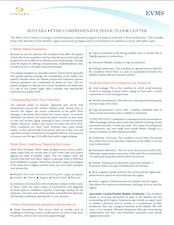Ovarian Cyst ≫
Fluid collections in the ovary. A cyst forms every month, releases and egg and then is absorbed by the body. Sometimes these cysts become abnormal because they aren’t absorbed, growth to large, or have a growth inside. A transvaginal ultrasound is the best test to evaluate an ovarian cyst. If an ultrasound is repeated in 6-8 weeks, the cyst is often resolved.
Leiomyomas (fibroids) ≫
Cells inside the muscle of the uterus that grow faster than other cells. Many women have fibroids and they never cause a problem. Depending on the size, location, & number of fibroids, they can cause heavy periods, pressure, and infertility.
Adenomyosis ≫
Condition where the glands from the lining of the uterus grow into the muscle of the uterus. This condition can cause a patient to have significant heavy and painful periods
Endometriosis ≫
Condition where endometrial cells from the lining of the uterus grow outside the uterus. The commonly attach and grow on the lining of the pelvis, on the ovary, behind the uterus, and can occasionally attach to the bladder and colon.
Endometrial Polyps
Benign growth from the lining of the uterus. They often cause heavy or irregular bleeding. They can often be removed through the vagina and cervix without the need for any incisions and may be able to be performed in the office
Endometritis
Chronic bacterial infection of the lining of the uterus that can cause heavy, irregular, & painful periods. Treatment is usually a 2 to 6 weeks course of antibiotics.
Pelvic Floor Spasm
Condition where the muscles that make of the support of the pelvis become tense. This can be triggered by several different caused. One of the most effective treatments is pelvic floor physical therapy. Another effective therapy is neuromodulation. This is where a medication is prescribed that decreased the sensitivity of the nerve.
Nerve Dysregulation
Nerve network that regulates the pelvic is very complex and not fully understood. If there is not an anatomic abnormality to explain a patient’s pain, then a nerve dysfunction or dysregulation may be suspected. In this condition the nerves in the pelvis conduct signals through the spine abnormally. Treatment commonly consist of medication the help the nerve function more efficiently and decrease the abnormal signals that are sent.



